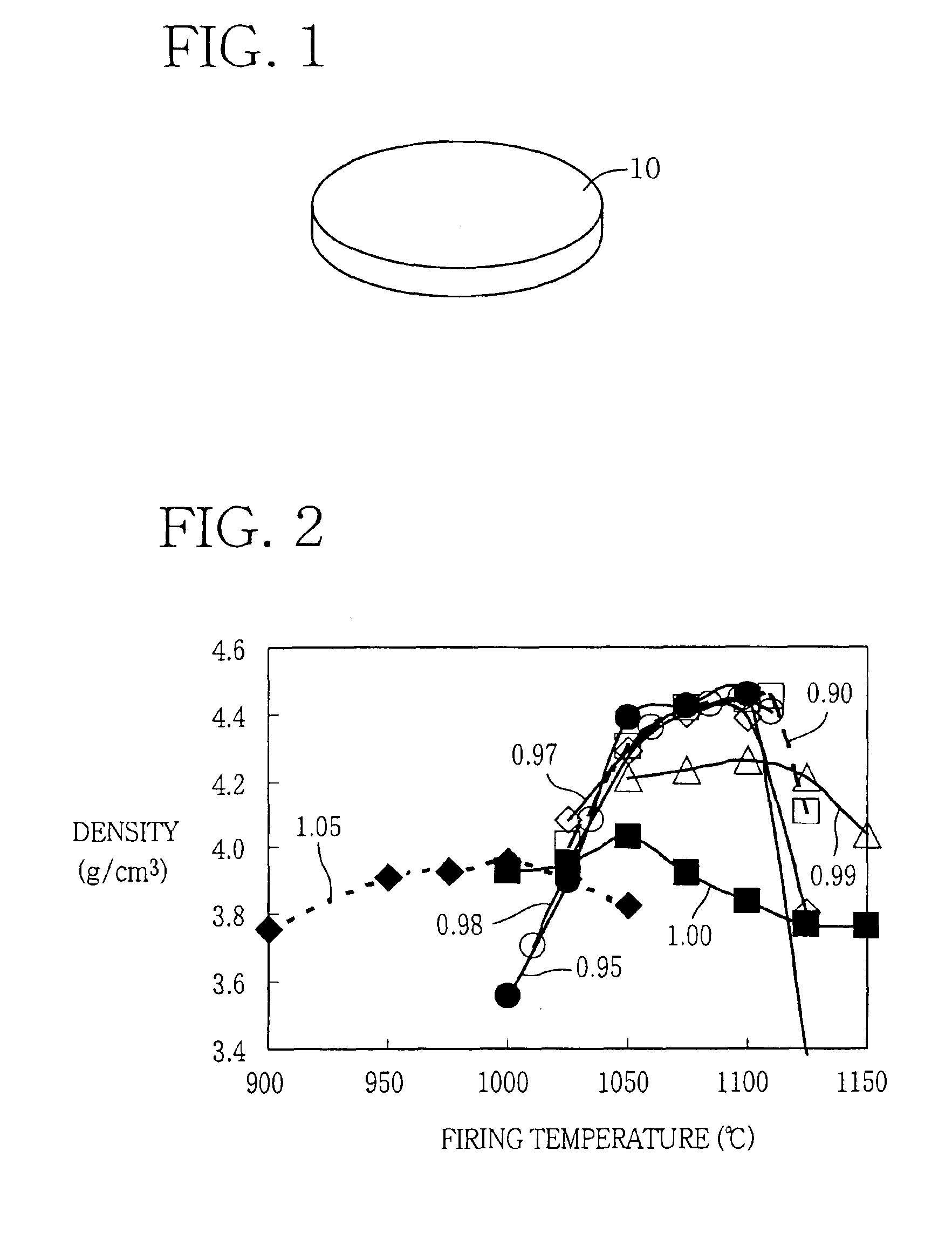Lead-free piezoelectric ceramic composition wherin Cu is contained in (KxA1-x)y(Nb1-zBz)O3perovskite compound, and process of preparing the same
a piezoelectric ceramic and compound technology, applied in the field of lead-free piezoelectric ceramics, can solve the problems of low sinterability of starting materials, abnormal growth of grains, and inferior lead-free piezoelectric materials, and achieve high sinterability and low melting point. , the effect of improving the sinterability of the starting material
- Summary
- Abstract
- Description
- Claims
- Application Information
AI Technical Summary
Benefits of technology
Problems solved by technology
Method used
Image
Examples
Embodiment Construction
[0044]There will be described in detail one embodiment of this invention, referring to the accompanying drawings.
[0045]Referring first to the perspective view of FIG. 1, there is illustrated a piezoelectric ceramic element 10 (hereinafter referred to as “element 10”) formed of a lead-free piezoelectric ceramic composition. The element 10 takes the form of a circular disc having a substantially constant diameter of about 20 mm and a substantially constant thickness of about 1 mm. For instance, the element 10 is used for a supersonic or ultrasonic actuator.
[0046]The lead-free piezoelectric ceramic composition of the element 10 is constituted primarily by a lead-free perovskite compound (K,Na)(Nb,Ta)O3, for example, (K0.5Na0.5)0.97 (Nb0.9Ta0.1)O3. At the grain boundary of (K, Na)(Nb, Ta)O3, there exists at least one compound including Cu, such as KaCubNbcOd, for instance, K4CuNb8O23 and K5Cu2Nb11O30, and / or KeCufNbgOh, for instance, K5.4Cu1.3Ta10O29, wherein “a” through “h” are arbitra...
PUM
| Property | Measurement | Unit |
|---|---|---|
| Composition | aaaaa | aaaaa |
| Piezoelectricity | aaaaa | aaaaa |
Abstract
Description
Claims
Application Information
 Login to View More
Login to View More - R&D
- Intellectual Property
- Life Sciences
- Materials
- Tech Scout
- Unparalleled Data Quality
- Higher Quality Content
- 60% Fewer Hallucinations
Browse by: Latest US Patents, China's latest patents, Technical Efficacy Thesaurus, Application Domain, Technology Topic, Popular Technical Reports.
© 2025 PatSnap. All rights reserved.Legal|Privacy policy|Modern Slavery Act Transparency Statement|Sitemap|About US| Contact US: help@patsnap.com



